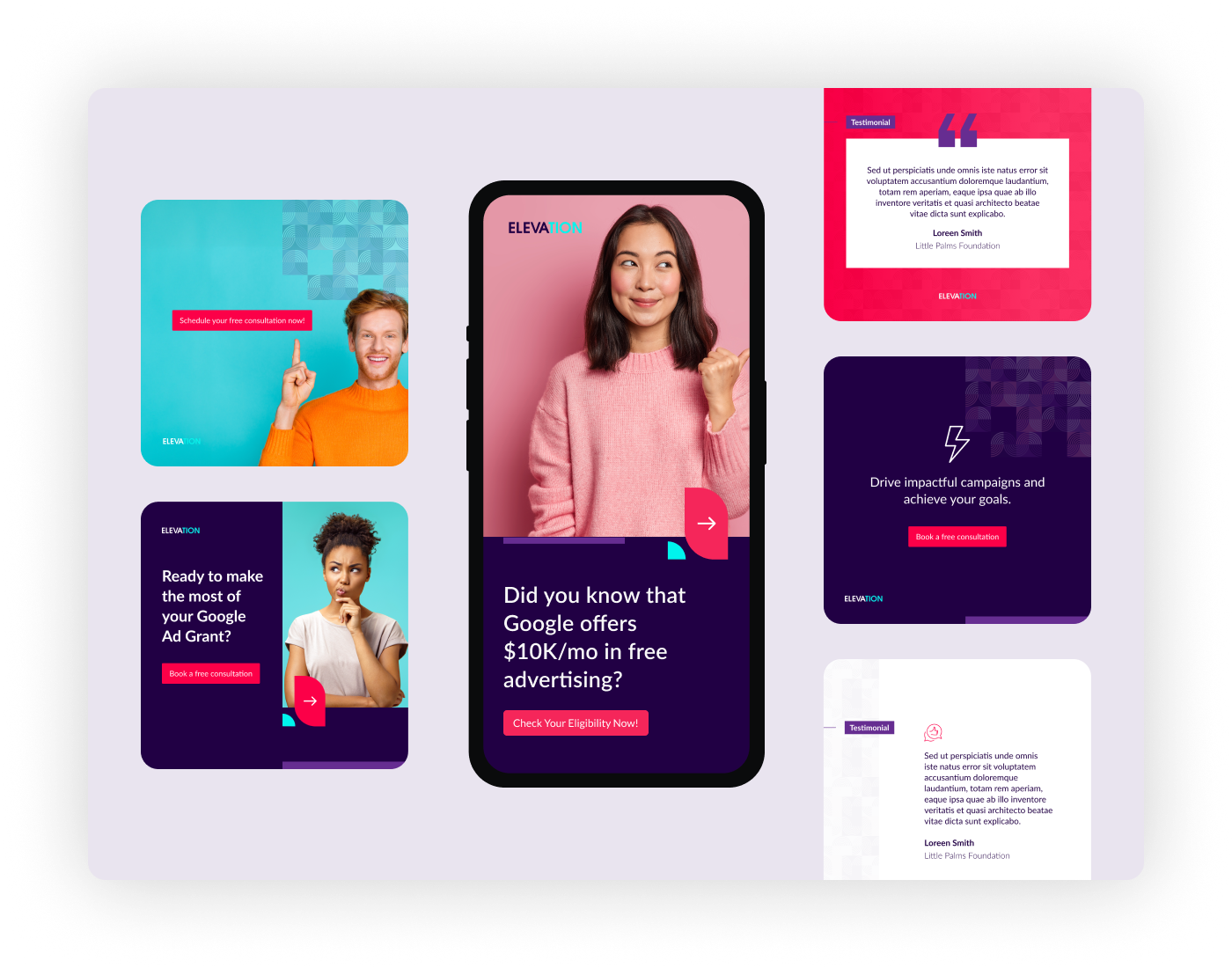There’s no denying how important Facebook is to your organization, social media strategy, and probably even your personal life. Facebook is so integrated into society that nowadays pretty much everyone has one — along with an email, phone number, and social security number. We even use it as a verb to add us on the social media site! Here are some mind-blowing stats to show you just how much Facebook really matters:
- There are over 1.86 billion monthly active Facebook users — more than Whatsapp, Twitter, Instagram, etc.
- There are 1.15 billion mobile daily active users. (Remember how important being mobile-ready is these days!)
- On average, the Like and Share Buttons are viewed across almost 10 million websites daily.
- Facebook users are 76% female (out of 100% of all females) and 66% male (out of 100% of all males).
- Five new profiles are created every second.
- Highest traffic occurs mid-week between 1 to 3 pm.
- On Thursdays and Fridays, engagement is 18% higher.
- 42% of marketers report that Facebook is critical or important to their business.
Ok, I’m sure you got it, Facebook is a big deal. But how is your nonprofit reacting to this platform to help increase your traffic potential and spread your mission even further? Does your nonprofit have a Facebook page? If so, do you keep your audience updated on what your organization is doing? Do you keep your donors updated on how their money is being used? Do you keep your volunteers up-to-date on more work opportunities? If you answered no to one or more of these questions, we would suggest taking the following tips and taking advantage of this valuable (and free) resource for your nonprofit!
Raise Awareness and engage with the public
People like, comment on, and share posts that are interesting and grab their attention in their news feeds. It’s important that your posts do just that. Grab people’s attention with real stories, vivid photos, or interesting videos so that people will interact with your post.
There are many ways to create posts that grab people’s attention. Here are four types of posts that we recommend publishing:
Video posts
According to a study by Social Bakers, the average video post generates 135% greater organic reach when compared to photo posts. Remember that videos in your news feed will automatically start playing without sounds so be sure to make the first few seconds of your video visually appealing so viewers will keep watching. Also you should think about using Live Video to further engage your audience by showing them live footage of projects you are working on or updates from your headquarters. Did you know that you can also use special cameras to create 360° Facebook videos? This type of camera could be a great investment for your organization to create a broader impact by posting real scenarios from a 360° standpoint. Below is an example of a 360° video filmed live by charity: water.
Infographics
Infographics can help boil down a complex idea into a clean and simple graphic. They call your attention and give you facts and statistics in a way you can easily digest. For Facebook, keep your infographics short and sweet as Mercy Corps does in the following. Keep the long and more complex infographics for sites like Pinterest.

Images
Photos and graphics will keep your nonprofit’s Facebook page authentic and more visually appealing. If you post an update or blog post, create a graphic with the title to call more attention so more people will click on it. Post pictures of the work your organization is doing and of your volunteers to show how much they matter. You can even post photos of your team behind-the-scenes to keep your organization real and authentic. Finally, consider making thank-you graphics every once in a while to thank your donors in a more expressive way.
One final idea you could consider when uploading photos to your Facebook page is make the photo “live.” What do I mean by that? How many times does a nonprofit upload a photo like the one to the right? Have you ever considered doing a headshot that’s similar, but instead recording their head shot so you can see that these people who you sponsor or donate to are actually alive, breathing, smiling individuals, not just a poor child on a screen. Your impact could go even further this way. Check out the way charity: water does it here.
Links
By adding a link to your post, you make the post more visually appealing as it adds a large image and clickable area that send people to the linked website. The more people click on, comment on, like, or share your link, the easier Facebook knows that it is good, relevant content and will allow your link to have more reach to your audience.
Generate online donations and fundraise
Facebook does a great job of providing easy methods to donate to your cause. You can add donate buttons to your page and posts as well as set up pages for your fundraisers.
Donate
Facebook’s donate buttons are pretty straightforward. You can add a donate button to your page header or posts and allow your donors to either donate directly through Facebook or direct them to your website to donate from there. Only US-based 501(c)(3) organizations can add the donate button to their posts.You can also add these buttons to your Facebook ads if you have them.
Fundraise
US-Based 501(c)(3)organizations are eligible to use Facebook for fundraisers. Your supporters can set up a dedicated page to share their story, tell others about your mission and rally around a fundraising goal. Remember the Ice Bucket Challenge that went viral on Facebook in 2014? Although it seemed like an eccentric campaign strategy, the ALS Association managed to raise over $100 million in funds! There’s no reason why your nonprofit can’t also take a similiar strategy to fundraise on Facebook.
Events
Using the event calendar, you can create events that your nonprofit is putting on, especially in order to raise money. It’s another great functionality that Facebook offers so that your audience can stay up-to-date with your organization and have yet another way to donate.
Ads
Facebook Ads can help you reach new people on Facebook who may be interested in your organization. If you have some budget to work with, ads can be a highly effective way to scale your organization and drive tangible results. They can appear in the news feed or on the right-hand column. You choose the objective you want to achieve and the audience you want to see it. For more information on ads, click here.
To sum up:
Whether it’s using Facebook for spreading your mission, collecting donations, or fundraising, we can see how important it is to help your nonprofit have a greater impact among your community. Start today by utilizing your Facebook page to engage with your public, increase your online donations, host fundraisers, spread awareness, and share events.
As always, if you would like to share your own personal experiences using Facebook to help further your nonprofit’s cause, please comment below or feel free to reach out to us at Elevation. We’d love to hear from you!


